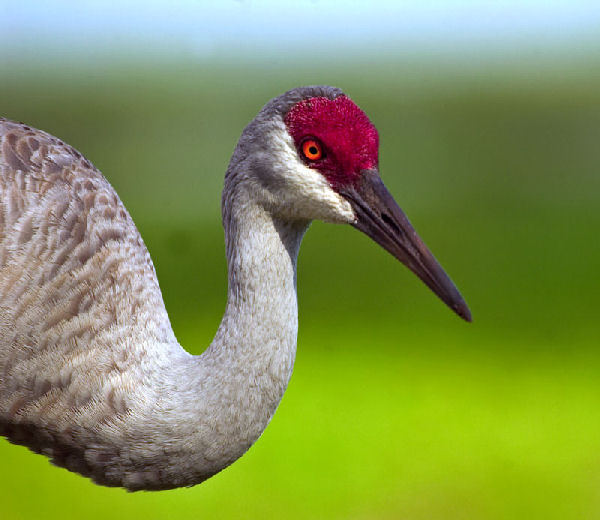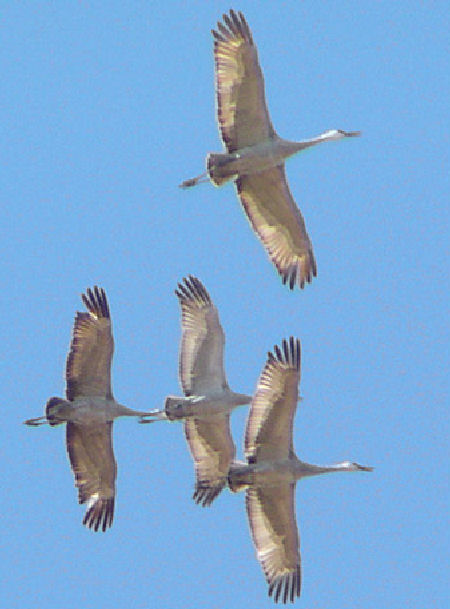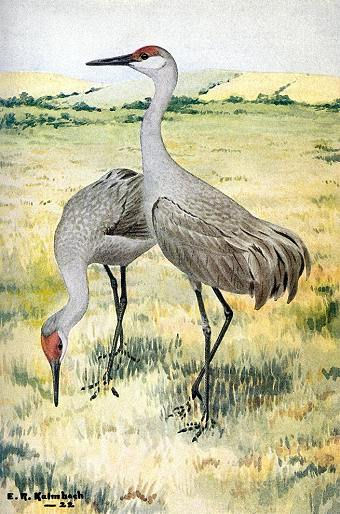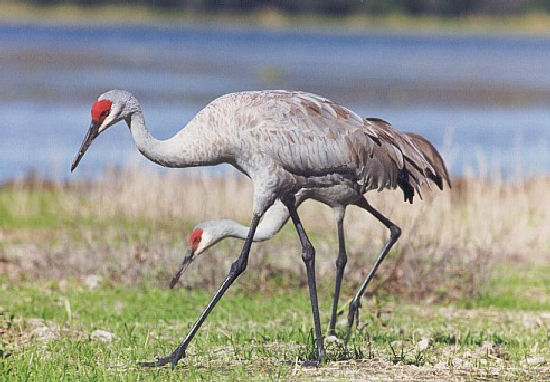Long-legged Waders
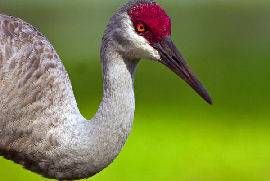 |
Sandhill Crane
Grus canadensis |
Description34-48" (86-122 cm). W. 6' 8" (2 m). Very tall, with long neck and legs. Largely gray, with red forehead; immature browner, no red on head. Plumage often appears rusty because of iron stains from water of tundra ponds.
VoiceA loud rattling kar-r-r-r-o-o-o.
RangeBreeds from Siberia and Alaska east across Arctic Canada to Hudson Bay and south to western Ontario, with isolated populations in Rocky Mountains, northern prairies, and Great Lakes region, and in Mississippi, Georgia, and Florida. Winters in California's Central Valley, and across southern states from Arizona to Florida. Also in Cuba. |
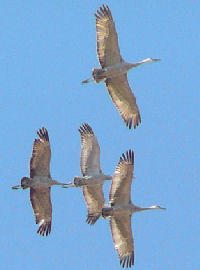 |
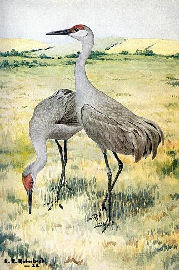 |
Endangered StatusThe Mississippi Sandhill Crane, a subspecies of the Sandhill Crane, is on the U.S. Endangered Species List. It is classified as endangered in Mississippi. Apparently the Sandhill Crane was always more numerous than the larger Whooping Crane, and the fact that it breeds mostly in the remote Arctic has saved it from the fate of its relative. But it is sensitive to human disturbance, and the draining of marshes has reduced nesting populations in the United States. The
declined in the mid-20th century when its preferred savannah habitat was planted over with slash pines. Commercial and residential development, the building of highways, pollution, and other factors have caused further deterioration to the habitat. Most of the current crane population and its habitat are protected in the Mississippi Sandhill Crane National Wildlife Refuge. The Grand Bay National Wildlife Refuge to the southeast may be able to sustain a second population of cranes. |
HabitatLarge freshwater marshes, prairie ponds, and marshy tundra; also on prairies and grainfields during migration and in winter.
Nesting2 buff eggs, spotted with brown, in a large mound of grass and aquatic plants in an undisturbed marsh. |
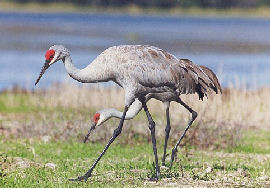 |
Discussion
These cranes migrate in great flocks and assemble in vast numbers at places like the Platte River in Nebraska. Here it is possible to see what must have been a common sight when the species bred over most of the interior United States. The mating dance of the Sandhill Crane is spectacular. Facing each other, members of a pair leap into the air with wings extended and feet thrown forward. Then they bow to each other and repeat the performance, uttering loud croaking calls. Courting birds also run about with their wings outstretched and toss tufts of grass in the air.





